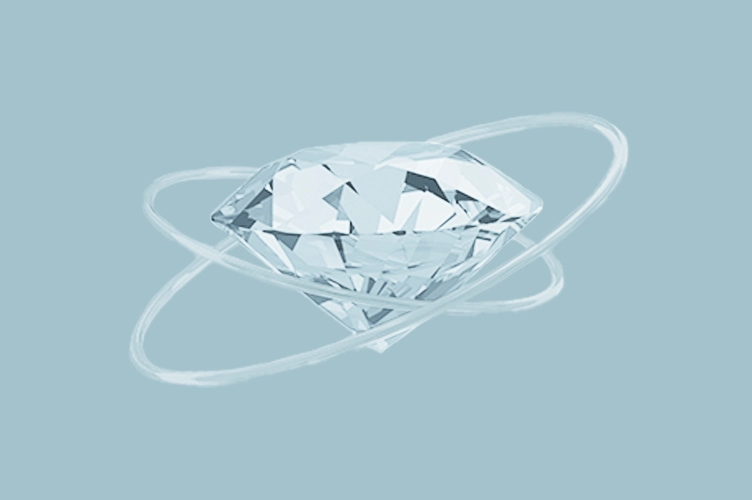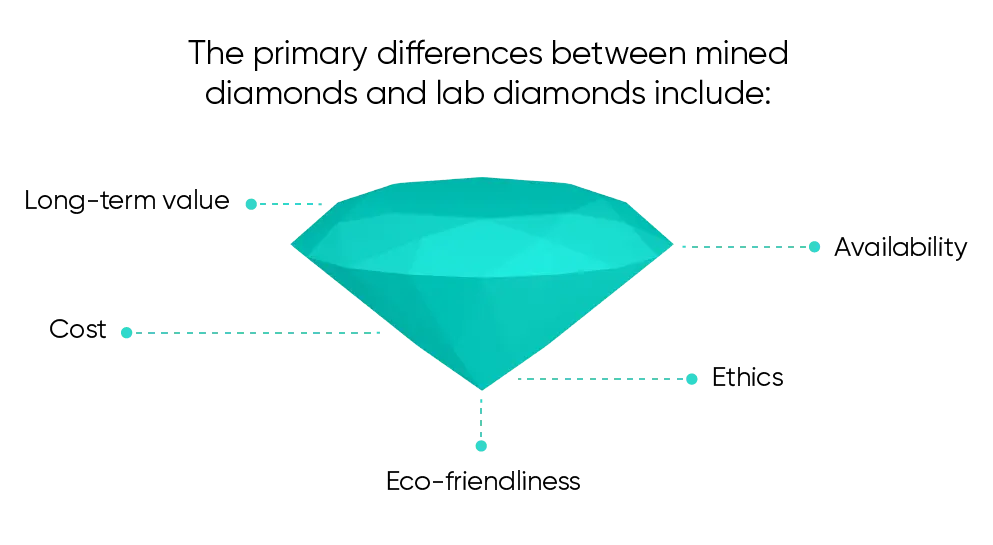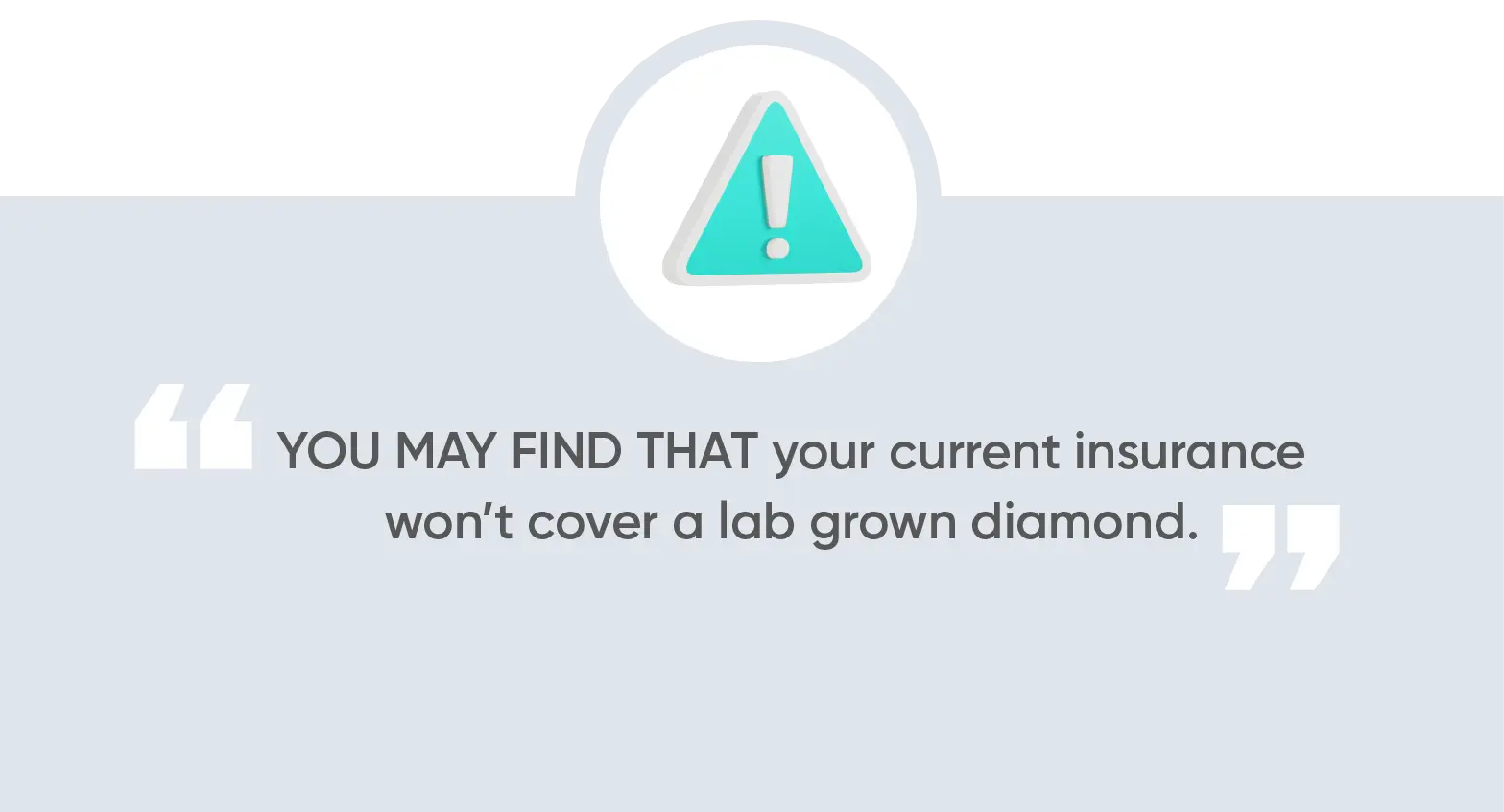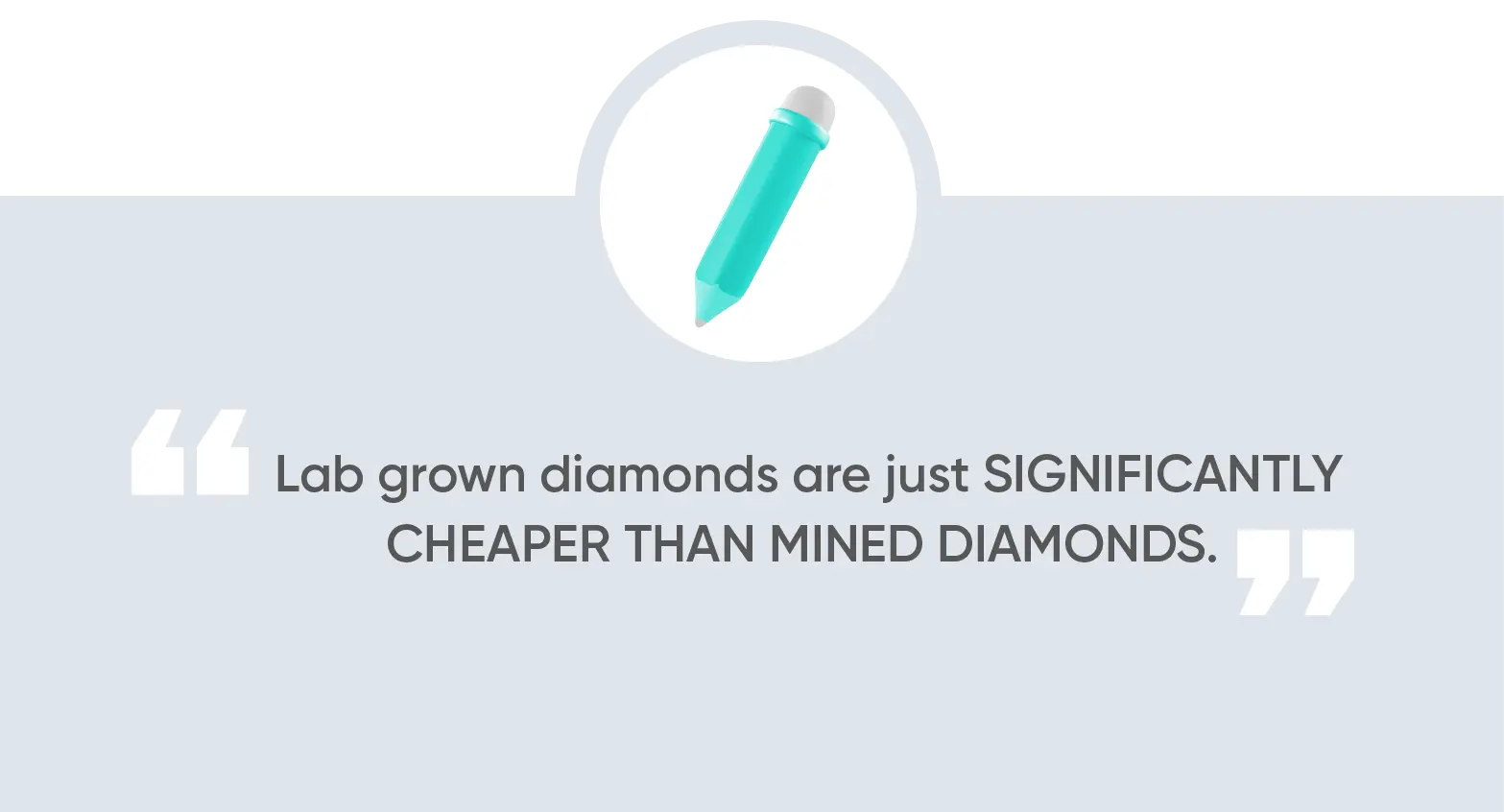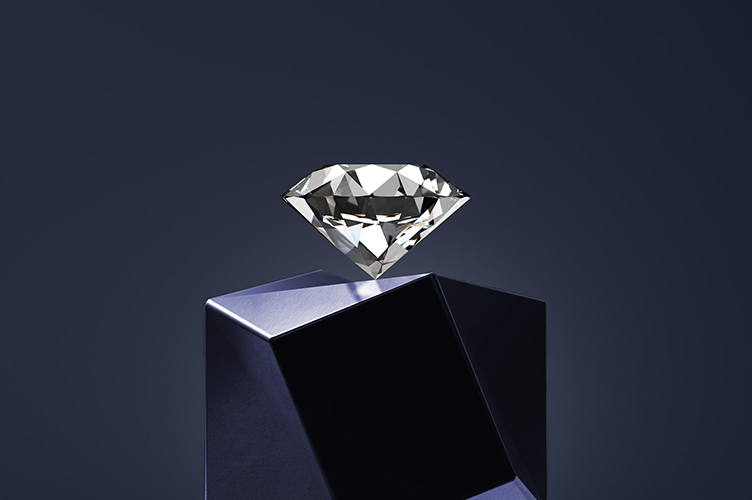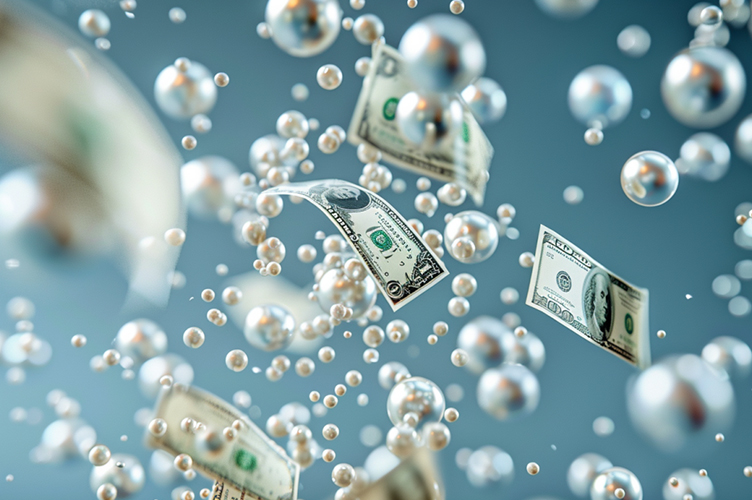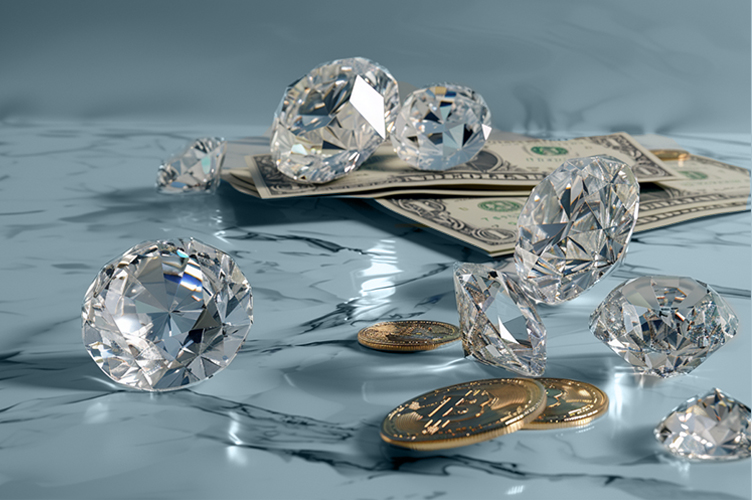What are the Disadvantages of Lab Grown Diamonds? Everything You Need to Know
For shoppers on a budget, a lab grown diamond is a seemingly easy choice. You get a nearly identical gemstone to a natural diamond at a much lower cost.
However, are there lab grown diamonds cons if you look a bit deeper? Here’s everything you need to know about lab grown vs natural diamonds.
What You Will Learn
*We are jewelry experts and enthusiasts that love to share our favorite brands, tips, and tricks with you. If you choose to make a purchase through one of the links, we may earn a commission at no additional cost to you.
Man Made Diamonds: A Quick Overview of How They’re Made
Before we can get into the negatives of lab-grown diamonds, we must understand the differences between lab grown diamonds and their natural counterparts.
Put simply, natural or earth-mined diamonds are crafted over millions of years beneath the Earth’s crust from pure carbon combined with pressure and heat. Creating diamonds in a lab requires the same process, just fine-tuned to take place over a much smaller time frame in a much more controlled setting.
Using a handful of methods (like chemical vapor deposition), the diamond industry crafts each lab diamond using diamond seeds (a diamond seed is a tiny piece of diamond) over weeks or months. The result is an actual diamond with quality equal to what you might find in their mined counterparts.
Think a lab diamond might be for you? Here are some lab grown diamond rings we recommend:

We love this diamond band and center stone combination
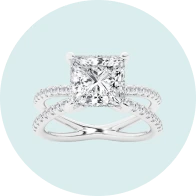
Add some sparkle to every day with this unique band
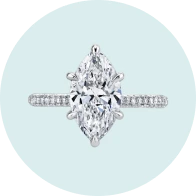
You can’t go wrong with this elegant solitaire
Main Differences Between Mined Diamonds and Lab Diamonds
The primary differences between mined diamonds and lab diamonds include:
- Cost
- Eco-friendliness
- Ethics
- Availability
- Long-term value
Otherwise, both natural and synthetic diamonds are exactly the same in terms of chemical makeup (unlike diamond-lookalikes, known as diamond simulants, like cubic zirconia).
The Cons of Lab-Grown Diamond
So why would you not want to buy a lab created diamond? There are a few disadvantages of lab-grown diamonds which can explain why you might avoid a lab created diamond.
Depreciating Value
As mentioned, one primary difference between lab grown and natural diamonds is long-term value. Whereas earth mined diamonds are rare and finite and tend to increase in price over time, lab diamonds are readily available. As demand rises, labs can continue to produce lab diamonds — meaning lab diamonds are not limited or scarce compared to natural diamonds.
If you’re interested in fine jewelry from an investment standpoint, lab made diamonds won’t be a good fit for your needs.
Sentimental Value
There is, of course, a particular sentimental value that comes with a natural diamond. Regardless of their issues, mined diamonds have a romantic appeal that you can’t replicate in a lab diamond. For some, this sentimental value is enough to persuade them only to purchase natural diamonds versus lab created diamonds.
Lack of Education Surrounding Lab Created Diamonds
Because of the lack of education surrounding lab created diamonds, some may simply dislike them. They might think that lab grown diamonds are inferior to natural diamonds or that lab grown diamonds aren’t the same as natural diamonds. If you’re specifically shopping for a diamond engagement ring, you’ll want to check with your spouse-to-be and get their thoughts on lab grown diamonds. They might think that the cons of lab grown diamonds, like these, outweigh the pros.
Suggested Read: What Are Lab Grown Diamonds?
Human Rights Issues
It’s no secret that a mined diamond comes with its ethical considerations. Conflicts, wars, and human rights issues are all intermingled with the diamond industry.
That said, the diamond industry does provide income to third-world countries. Some might argue that, for this reason, buying a lab made diamond also comes with its ethical considerations, as doing so takes income away from those involved in the natural diamond industry who may need it most.
Eco-Friendliness
Likewise, while diamond mining is hardly eco-friendly, creating a diamond in a lab isn’t exactly innocent. Making the conditions to transform a diamond seed into a lab grown diamond requires large amounts of energy.
It’s Not Always Easy to Insure Lab Diamonds
You may find that your current insurance won’t cover a lab grown diamond. If you rely on homeowners insurance or a similar policy to protect your fine jewelry in the event of a natural disaster or similar incident, be sure to thoroughly review what your policy will and will not cover, jewelry-wise.
(And, if your current policy won’t cover your lab grown diamond (most won’t), check out the options from BriteCo!)
The Pros of Lab Grown Diamonds
Even though there are, admittedly, a fair amount of lab diamond cons, there are also plenty of reasons why you should consider buying a lab grown diamond.
Cost
The most crucial factor to consider, and what makes lab grown diamonds stand apart from natural diamonds the most? Cost.
Lab grown diamonds are just significantly cheaper than mined diamonds. If you’re on a budget and want to buy the best, highest-quality diamond for your money, a lab grown diamond is the way to go.
Quality
Along these lines, from a “4 Cs” perspective (the “4 Cs” is the grading scale by which both mined and manmade diamonds are graded), lab grown diamonds just boast a higher level of quality. Traditional diamonds rely on the Earth’s conditions to determine their quality or lack thereof, whereas, in a lab, manufacturers can directly control a diamond’s quality.
Ethical Considerations
Yes, there are ethical and environmental considerations with both mined and man made diamonds. You’ll need to weigh both sides of the argument and decide which option you feel most aligns with your personal values.
More Options
Suppose your budget only allows you to shop for specific colors or cuts of natural diamonds. In that case, you’ll have far more options when shopping for a lab-grown diamond. You can easily find colored, man made diamonds on the (relatively) cheap side, as well as specific cuts that would be pricier if you were shopping for a mined diamond only.
Protect Your Lab Grown Diamond with the Right Insurance
As mentioned, not every insurance policy will protect your lab grown diamond — but that hardly means your lab grown diamond isn’t worth protecting.
Look at BriteCo’s jewelry insurance options and find the perfect fit for your lab grown diamond. Our comprehensive coverage protects you under various unfortunate circumstances, from mysterious loss to theft.
Also Check:
Are Lab Grown Diamonds Real? | BriteCo Jewelry Insurance
The History of Lab Grown Diamonds | BriteCo Jewelry Insurance
See How Much Larger a Diamond You Can Get with Lab-Grown
The Best Lab Grown Diamond Rings | BriteCo Jewelry Insurance
Do Lab Grown Diamonds Pass a Diamond Tester?
Lab Grown Diamond Necklace: An Expert’s Pick


